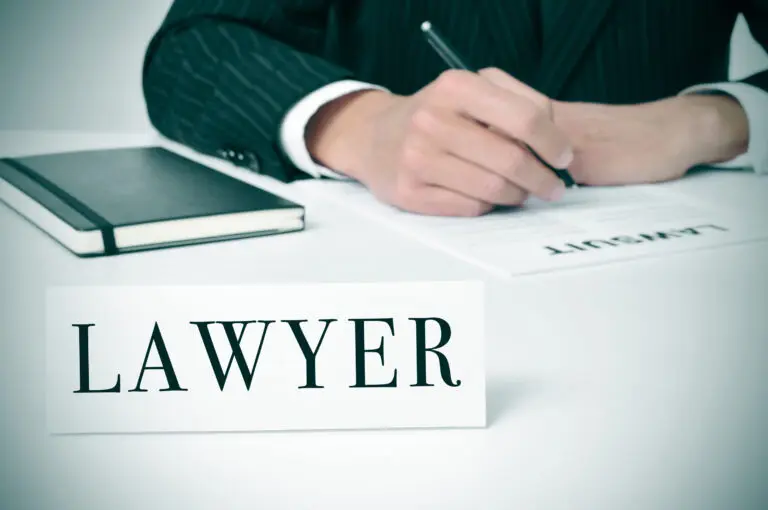In the aftermath of a pedestrian accident, victims often face not only physical injuries but also emotional and psychological trauma. Dolor y sufrimiento is a significant component of the compensation claims in such accidents, and it is crucial to understand how pedestrian accident lawyers calculate these damages. This article delves into the methods and factors used by legal professionals to determine the value of pain and suffering in pedestrian accident claims.
Understanding Pain and Suffering
Pain and suffering refer to the physical pain, emotional distress, and psychological impact experienced by a victim following an accident. Unlike economic damages, which cover medical bills and lost wages, pain and suffering fall under non-economic damages, making them more challenging to quantify. Here are some common aspects considered under pain and suffering:
- Physical Pain: The immediate and long-term physical discomfort resulting from injuries.
- Emotional Distress: Anxiety, depression, fear, and other emotional responses to the accident.
- Loss of Enjoyment of Life: Inability to participate in activities that were once enjoyable.
- Mental Anguish: Severe psychological effects, such as PTSD, that affect daily functioning.
Understanding these components helps in grasping the complexity of calculating pain and suffering in pedestrian accident claims.
The Role of Pedestrian Accident Lawyers
Pedestrian accident lawyers play a crucial role in ensuring that victims receive fair compensation for their pain and suffering. Their responsibilities include:
- Recopilación de pruebas: Collecting medical records, witness statements, and expert testimonies.
- Valuing Claims: Using various methods to calculate the monetary value of pain and suffering.
- Negociar con las compañías de seguros: Ensuring that the insurance companies offer a fair settlement.
- Litigating: Representing the victim in court if a fair settlement cannot be reached.
Lawyers use their expertise to navigate the complexities of non-economic damages and advocate for the victim’s best interests.
Methods to Calculate Pain and Suffering
There are several methods used by pedestrian accident lawyers to calculate pain and suffering. These methods help provide a structured approach to determining the appropriate compensation for the victim.
The Multiplier Method
One of the most commonly used methods is the multiplier method. This approach involves multiplying the total economic damages (medical bills, lost wages, etc.) by a number typically ranging from 1.5 to 5. The multiplier used depends on the severity of the injuries and the impact on the victim’s life.
- Example: If the economic damages amount to $10,000 and a multiplier of 3 is used, the pain and suffering compensation would be $30,000.
The Per Diem Method
Another method is the per diem (per day) method, which assigns a daily rate for pain and suffering. This rate is then multiplied by the number of days the victim is expected to suffer from the injuries.
- Example: If the daily rate is set at $150 and the victim is expected to suffer for 200 days, the pain and suffering compensation would be $30,000.
Factors Influencing the Calculation
Several factors influence the calculation of pain and suffering, including:
- Severity of Injuries: More severe injuries typically result in higher compensation.
- Duration of Recovery: Longer recovery times increase the compensation amount.
- Impact on Daily Life: The greater the disruption to the victim’s daily life, the higher the compensation.
- Age of the Victim: Younger victims might receive higher compensation due to the longer impact on their lives.
- Pre-existing Conditions: Pre-existing conditions can complicate the calculation, but they are still considered.
Gathering Evidence for Pain and Suffering Claims
To support a claim for pain and suffering, pedestrian accident lawyers gather extensive evidence. This evidence is crucial in demonstrating the extent of the victim’s suffering and justifying the compensation amount.
Medical Records and Reports
Medical documentation is vital in establishing the extent and impact of injuries. These records include:
- Doctor’s Notes: Detailed descriptions of the injuries and treatment plans.
- Hospital Records: Documentation of hospital stays, surgeries, and other treatments.
- Physical Therapy Reports: Evidence of ongoing rehabilitation and its necessity.
Psychological Evaluations
Psychological evaluations are essential in cases involving significant emotional distress. These evaluations may include:
- Therapist’s Reports: Documentation of therapy sessions and the victim’s progress.
- Psychiatric Assessments: Professional assessments of mental health conditions like PTSD, anxiety, and depression.
Personal Journals and Testimonies
Personal accounts from the victim and their loved ones can provide valuable insights into the daily impact of the injuries. These may include:
- Victim’s Journal: Entries detailing daily pain levels, emotional struggles, and limitations.
- Family and Friends’ Testimonies: Statements about the changes observed in the victim’s behavior and lifestyle.
Photographs and Videos
Visual evidence can be compelling in demonstrating the severity of injuries and their impact on the victim’s life. This includes:
- Photographs of Injuries: Images taken immediately after the accident and during recovery.
- Vídeos: Footage showing the victim’s daily struggles and limitations.
Negociar con las compañías de seguros
Insurance companies often attempt to minimize payouts for pain and suffering. Pedestrian accident lawyers use their negotiation skills to ensure fair compensación for their clients.
Presenting a Strong Case
A well-documented case increases the chances of a fair settlement. Lawyers present all gathered evidence, including medical records, psychological evaluations, and personal testimonies, to support the claim.
Countering Lowball Offers
Insurance companies may offer settlements that are lower than what the victim deserves. Lawyers counter these offers by highlighting the strength of the evidence and the impact of the injuries on the victim’s life.
Using Legal Precedents
Legal precedents can be used to support the claim. Lawyers refer to similar cases where substantial compensation was awarded for pain and suffering.
Litigation: Taking the Case to Court
If a fair settlement cannot be reached through negotiation, the case may go to court. Pedestrian accident lawyers are prepared to represent their clients in litigation.
Preparing for Trial
Preparation is key to a successful trial. Lawyers prepare by:
- Organizing Evidence: Ensuring all evidence is readily accessible and well-presented.
- Identifying Witnesses: Lining up witnesses, including medical experts and personal acquaintances, to testify.
- Developing a Strategy: Crafting a compelling narrative that highlights the victim’s suffering and the need for fair compensation.
Courtroom Representation
In the courtroom, lawyers advocate for their clients by presenting evidence, cross-examining witnesses, and making persuasive arguments. Their goal is to convince the judge or jury of the extent of the victim’s pain and suffering and the need for appropriate compensation.
Long-Term Implications of Pain and Suffering
The impact of pain and suffering can extend far beyond the immediate aftermath of the accident. Understanding these long-term implications is crucial for a comprehensive compensation claim.
Chronic Pain
Many victims experience chronic pain that persists long after their injuries have healed. This can significantly impact their quality of life and ability to work.
Emotional and Psychological Effects
The emotional and psychological effects of a pedestrian accident can be profound and long-lasting. Victims may experience ongoing anxiety, depression, and PTSD, which require continuous treatment and support.
Impact on Relationships
Pain and suffering can strain relationships with family and friends. Victims may withdraw socially, struggle with irritability, and find it challenging to maintain their usual social activities.
Legal Rights and Responsibilities of Pedestrians
Understanding the legal rights and responsibilities of pedestrians can provide context for claims and highlight the importance of safety measures.
Rights of Pedestrians
Pedestrians have the right to use crosswalks and walkways safely. They are entitled to expect that drivers will exercise reasonable care to avoid accidents.
Responsibilities of Pedestrians
Pedestrians also have responsibilities, such as obeying traffic signals and using designated crosswalks. Failure to adhere to these responsibilities can affect the outcome of a claim.
The Role of Comparative Fault
In some cases, the concept of comparative fault may come into play. This means that both the pedestrian and the driver may share responsibility for the accident.
Understanding Comparative Fault
Comparative fault can impact the compensation amount. If the pedestrian is found partially at fault, their compensation may be reduced proportionally.
Implicaciones jurídicas
Lawyers must navigate the complexities of comparative fault to ensure their clients receive fair compensation despite shared responsibility.
Casos prácticos y precedentes jurídicos
Analyzing case studies and legal precedents can provide valuable insights into how pain and suffering claims are handled and the factors influencing their outcomes.
Case Study 1
In a notable case, a pedestrian who suffered severe injuries and emotional trauma received substantial compensation. The lawyer successfully argued that the victim’s pain and suffering were extensive, supported by comprehensive medical and psychological evidence.
Case Study 2
Another case involved a pedestrian with moderate injuries but significant psychological impact. The lawyer highlighted the long-term emotional distress, securing a compensation amount that reflected both the physical and psychological suffering.
Cambios y tendencias legislativas
Staying informed about legislative changes and trends in pedestrian law can help victims and lawyers navigate the legal landscape effectively.
Recent Legislative Changes
Recent changes in pedestrian safety laws and regulations can impact claims. For example, stricter penalties for drivers who fail to yield to pedestrians may strengthen a victim’s case.
Trends in Legal Rulings
Trends in court rulings can also influence the approach to pain and suffering claims. Understanding these trends helps lawyers develop strategies that align with current legal standards.
Tips for Pedestrian Safety
While the focus is on compensation claims, it is also important to discuss preventive measures to avoid accidents. Promoting pedestrian safety can reduce the risk of future incidents.
Safety Tips
- Use Crosswalks: Always use designated crosswalks and obey traffic signals.
- Be Visible: Wear bright or reflective clothing, especially at night.
- Stay Alert: Avoid distractions, such as using a phone, while walking near traffic.
Advocating for Safer Infrastructure
Advocating for safer pedestrian infrastructure, such as better lighting and clearly marked crosswalks, can help prevent accidents and protect pedestrian rights.
Conclusión
Calculating pain and suffering in pedestrian accident claims is a complex process that requires a thorough understanding of both legal and emotional factors. Pedestrian accident lawyers play a vital role in ensuring that victims receive fair compensation for their physical and emotional injuries. By gathering robust evidence, negotiating with insurance companies, and representing clients in court, these legal professionals advocate for the rights and well-being of pedestrian accident victims. Understanding the methods and factors involved in calculating pain and suffering can help victims navigate the legal process and secure the compensation they deserve.
Attorneys.Media Video Document References
- Is Personal Injury Part of Your Law Practice?
- As an Attorney, How Are You Generating Content for Your Online Presence?
- How Can You Help Potential New Clients Get Their Questions Answered?
- How Do You Differentiate Yourself When Someone Looks Online for Help?
- How Do You Differentiate Yourself as a Criminal Defense Attorney?
- Have You Been Thinking About Video Marketing for Your Law Firm?
- Should Attorneys Use Video Marketing to Attract New Clients?
- What Do Potential Clients See When They Research Your Name Online?
- Cómo puede ayudarle Attorneys.Media









